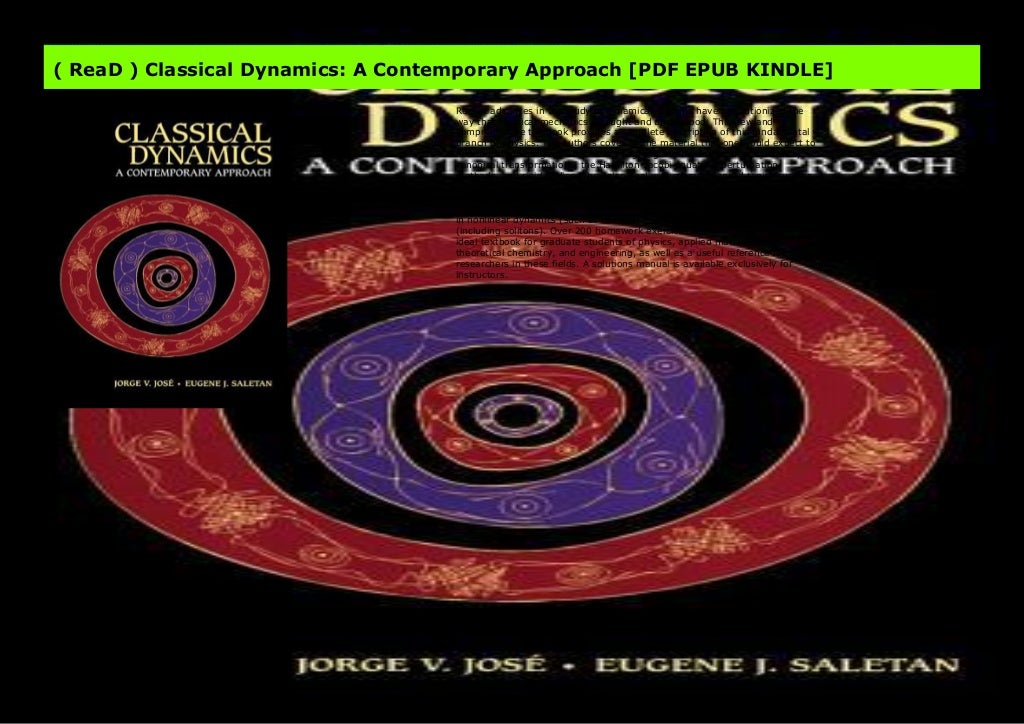

Deriva la ecuación E-L desde una variación.

Encuentras conceptos como Sistemas mecánicos, coordenadas generalizadas, los tipos de constraints que existen y cómo identificar sistemas en base a ello además de una discusión acerca del principio de d'alembert y energía y momentum desde este principio además que deriva la ecuación E-L desde d'alembert.Ģ)Lagrange's equations: Este capitulo tiene una discusión bastante típica acerca de las ecuaciones de lagrange. Me compré este libro sin ningun tipo de expectativa, uno mas para mi estantería y que hojearia un par de veces con tal de intentar entender un concepto que no pude en otro libro, pero fué una completa sorpresa el darme cuenta que a medida que más y más estudia desde este libro más me comenzaba a gustar.ġ)Introductory concepts: En este capitulo te enseñan las bases de la mecánica teórica. An annotated bibliography at the end of each chapter, a detailed table of contents and index, and selected end-of-chapter answers complete this highly instructive text.Īctualmente estoy cursando la carrera de licenciatura en física, he tenido experiencia con bastantes libros de mecánica clásica (los mas típicos como algunos menos conocidos) y la verdad me sorprende que este libro no sea parte de la literatura estándar para estudiar mecánica clásica porque la verdad es una joya. Problems included at the end of each chapter will help the student greatly in solidifying his grasp of the principal concepts of classical dynamics. Topics include d'Alembert's principle and the idea of virtual work, the derivation of Langrange's equation of motion, special applications of Lagrange's equations, Hamilton's equations, the Hamilton-Jacobi theory, canonical transformations and an introduction to relativity. After a concise review of basic concepts in Chapter 1, the author proceeds from Lagrange's and Hamilton's equations to Hamilton-Jacobi theory and canonical transformations. It is assumed that students are familiar with the principles of vectorial mechanics and have some facility in the use of this theory for analysis of systems of particles and for rigid-body rotation in two and three dimensions. This text proposes to give graduate students in science and engineering a strong background in the more abstract and intellectually satisfying areas of dynamical theory. Since Lagrange laid the foundation of analytical dynamics some two centuries ago, the discipline has continued to evolve and develop, embracing the theories of Hamilton and Jacobi, Einstein's relativity theory and advanced theories of classical mechanics.


 0 kommentar(er)
0 kommentar(er)
